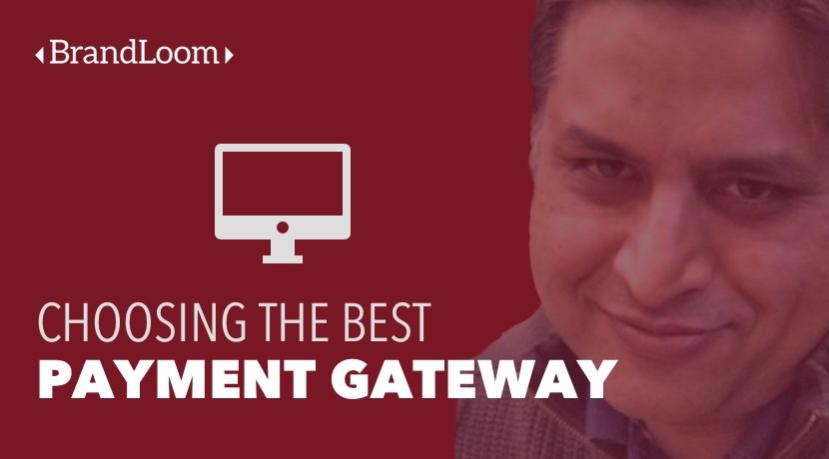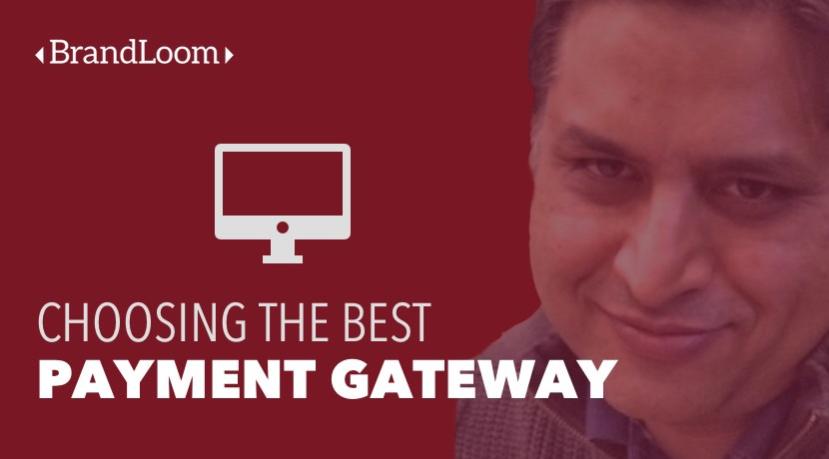
Contents
- 1 The Best Payment Gateway Depends on your Business Needs
- 2 What is Payment Gateway?
- 3 Types of Payment Gateway
- 4 How to Choose The Best Payment Gateway: 10 Tips
- 4.1 1 Choose between Setup Fee or Transaction Charges:
- 4.2 2 Decide if you need Automatic Billing Support:
- 4.3 3 Review the Purchasing Funnel:
- 4.4 4 You are not married to a Payment Gateway:
- 4.5 5 Be sure that your CMS support the Payment Gateway of your choice:
- 4.6 6 Do you serve overseas customers:
- 4.7 7 Keep Multiple Payment gateway Option:
- 4.8 8 The reputation of your Payment Gateway:
- 4.9 9 Customer support:
- 4.10 10 Consider Cash on delivery:
The Best Payment Gateway Depends on your Business Needs
If you are a start-up or an established business, looking to start your eCommerce Business, you must be grappling with a big question, how do I receive money from my customers. Several Payment Gateway options are available in the marketplace making the job of an entrepreneur becomes extremely difficult, particularly:
- If you are an unknown Brand or a business
- If you are dealing with International customers and would like to show them prices in their currency
- After all, you are a customer-centric business
- If the payment method takes too long to process
- If the payment gateway requires additional information
As a start-up or new business, you would like to ensure a conversion; once a customer likes your Brand Story. You need a Payment Gateway, which is not only safe and quick but also provides multiple payment options.
What is Payment Gateway?
A Payment Gateway is an eCommerce application service provider service that authorises credit card payments for Online businesses, online retailers, bricks and clicks, or traditional brick and mortar. It facilitates the transfer of information between a payment portal (such as a website, mobile phone or interactive voice response service) and the Front End Processor or acquiring bank.
Payment Gateway service automates the payment transaction between the shopper (buyer) and merchant (seller). It is generally a third-party service that is actually a system of computer processes (that process, verify, and accept or decline credit card transactions) on behalf of the merchant through secure Internet connections. The payment gateway infrastructure allows a merchant (seller) to accept credit, debit card and others form of electronic payments.
Types of Payment Gateway
This is the first question you must answer before you decide the most suitable Payment Gateway for your business. Payment Gateways are primarily of two types:
Hosted Payment Gateway in India
Benefits of Hosted Payment Gateways are:
- Payment Gateway is responsible for compliance with Data Privacy Laws as the transaction happens on their platform
- Hosted Payments are easy to setup
- Hosted Payment Gateways may add a seal of faith as sometimes they also run buyer protection programs
- Hosted Payment Gateways have been advertising heavily in India and thus have a high recall among consumers, which could be helpful for a new brand or startup
Challenges with Hosted Payment Gateways are:
- Redirection from a merchant website to a third party website may create doubts in the minds of new consumer in India.
- Redirection adds an extra layer of transaction and could reduce your conversion rates
Integrated Payment Gateways in India
Integrated Payment Gateways enable transaction on merchants (sellers) eCommerce website via the API.
Benefits of Integrated Payment Gateways are:
- Customer transact on merchants (sellers) website and it is generally quicker
- Smooth and seamless experience.
Challenges of Integrated Payment Gateways are
- Not easy to setup, you need to have technical expertise to integrate the Payment Gateway
- Merchant is responsible for compliance with law
- It is time consuming as merchant needs to obtain a merchant account
How to Choose The Best Payment Gateway: 10 Tips
It could be quite difficult to choose a Payment Gateway most appropriate for your business. If you go ahead with popular ones such as PayU Money, PayPal or Skrill, you will find their transaction charges to be very high. However, if you choose smaller ones such as Citrus, they have great features and low transaction charges. However, it is not so simple, and one can not decide just on the basis of cost.
Choose what suits your business objectives with the following 10 Tips to Choose Best Payment Gateway in India:
1 Choose between Setup Fee or Transaction Charges:
If you are a new brand or startup, you would not like to pay an initial setup fee (which is generally charged every year) of Rs 5000+ (US$90+), as you will take time to build up your business. At this juncture, it might be beneficial for you to consider Payment Gateway, which does not charge any setup fee (however may be charging higher transaction charges @ 4% to 5%).
However, if you are an established brand or a startup with deep pockets for advertising, you may select Payment Gateway with lower transaction charges which could be as low as 1% to 2% (with the assumption that you will build traffic quickly).
2 Decide if you need Automatic Billing Support:
If the product or service you are selling needs subscription, you need to choose payment gateway which allows automatic payment of recurring plans. Payment Gateways such as PayPal offers such support.
3 Review the Purchasing Funnel:
Consider the number of steps required to get to the payment confirmation page, if there are too many steps, a consumer may drop off. Ask yourself if you are asking for too much info, are you just a via-media to build payments gateways business (as some of them such as PayU Money ask consumers to create an account with them).
If you are asking for too much, it’s a recipe for disaster. Therefore review the purchasing funnel on Payment Gateways website or ask them to show you the demo. This is a good way to get an idea of how the process will actually function on your store. However, please note that you do not have much liberty on Hosted Payment Gateway. However, Integrated Payment Gateways offer you more flexibility.
On Integrated Payment Gateway you can opt for a one-page checkout, multi-page checkout, style form fields as you prefer. With the usage of Analytics data, you can eliminate the barriers to conversion.
4 You are not married to a Payment Gateway:
Start with whatever payment gateway make sense to you. In the beginning what is most important is that you receive payment from your customer. Keep on improvising. It is easy to move from one payment gateway to another (unless you have paid hefty setup fee).
5 Be sure that your CMS support the Payment Gateway of your choice:
All eCommerce CMS comes with off the shelf payment gateway plugin. Ask your Payment gateway if they support your CMS.
6 Do you serve overseas customers:
If you serve overseas customers, be sure that your payment gateway supports payment through foreign credit cards.
7 Keep Multiple Payment gateway Option:
If you are a new business, it makes sense to have multiple payment options as it may create faith in your new customer. Add PayPal as your additional payment option as it is very well known and consumers trust it.
8 The reputation of your Payment Gateway:
The reputation of your payment gateway could be quite handy to kick start a relationship with your prospective consumer.
9 Customer support:
Try speaking to Payment gateways customer support over holidays, if you are not able to reach out to them, probably it is not the right Payment Gateway for your business. However, if you are sure about your technical capability you could decide otherwise as well.
10 Consider Cash on delivery:
Cash on Delivery or CoD is a very popular payment method in India. You can not ignore if you want to build your consumer franchise. Consumer will start paying once they have couple of positive transactions with you. CoD is a must for eCommerce success in India.
Let us know your feedback on the above tips, we will be very happy to upgrade this article with your feedback.
[“source=brandloom”]




